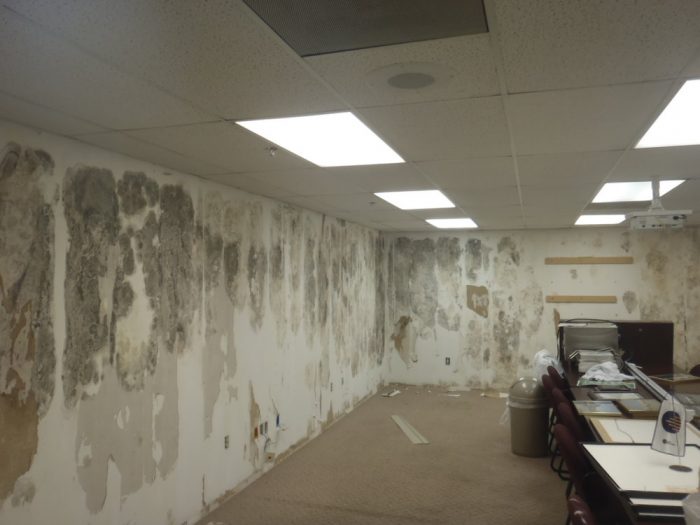Mold can pose significant business challenges, leading to structural damage and health concerns. This blog post will explore quick and easy methods for businesses to effectively eliminate mold. Companies can maintain a clean and mold-free environment by identifying the source of moisture, ensuring proper ventilation, removing mold-infested materials, and utilizing mold-inhibiting products. Regular inspections and prompt action prevent mold growth and create a haven for employees and customers. Let’s delve into practical steps businesses can take to address mold-related issues efficiently.
1. Identify the Source
Identifying the source of moisture is crucial to effectively eliminate mold. Inspect the premises thoroughly to locate any leaks, water damage, or areas with high humidity. Check common problem areas such as basements, bathrooms, and kitchens. By pinpointing the source of moisture, businesses can address the root cause of mold growth. This may involve repairing plumbing leaks, improving ventilation, or implementing moisture control measures. Promptly addressing the source of moisture is essential to prevent further mold infestations and ensure long-term mold removal success.

2. Ensure Proper Ventilation
Proper ventilation plays a vital role in preventing mold growth. Businesses should ensure that their ventilation systems, such as HVAC units, function effectively. Regularly clean and maintain these systems to remove dust and prevent moisture buildup. Encourage proper air circulation by opening windows or using fans to promote airflow. Adequate ventilation helps reduce humidity levels and avoid condensation, creating an environment conducive to mold growth. By prioritizing proper ventilation, businesses can create a well-ventilated space that discourages mold formation and promotes a healthier domestic situation for employees and customers.
3. Remove Mold-Infested Materials
Once the source of moisture is addressed, it is crucial to remove any mold-infested materials promptly. These may include carpets, ceiling tiles, wallpaper, or other porous surfaces that cannot be effectively cleaned. Dispose of these materials properly to prevent further mold spread. When handling mold-infested items, wearing protective gear, such as gloves and masks, is essential to avoid inhaling spores. Removing mold-infested materials eliminates a significant source of mold growth and reduces the risk of mold spores becoming airborne and causing potential health issues. Quick and thorough removal of these materials is essential for effective mold remediation.
4. Clean Mold-Contaminated Surfaces
For non-porous surfaces that can be cleaned, thoroughly cleaning mould-contaminated areas is essential. Use a detergent or mold-specific cleaning solution to scrub away the mold. Pay attention to walls, floors, furniture, and other affected surfaces. Reaching hidden or hard-to-reach areas where mold can easily hide is essential. After cleaning, ensure the characters are dehydrated to prevent moisture accumulation. This step eliminates existing mold spores and helps prevent further mold growth. Proper cleaning of mold-contamination surfaces is a crucial part of the mold removal, promoting a healthier and mold-free environment.
5. Utilize Mold-Inhibiting Products
To further prevent mold growth, businesses can utilize mold-inhibiting products. These specially formulated products, such as mold-resistant paints or coatings, can be applied to surfaces prone to moisture and mold growth. They create a protective barrier that inhibits mold spore germination and growth, reducing the likelihood of future mold issues. When selecting mold-inhibiting products, ensure they are suitable for the specific surface and follow the manufacturer’s instructions for application. Incorporating mold-inhibiting products into the maintenance routine provides an extra layer of protection against mold, prolonging the effectiveness of mold removal efforts and helping businesses maintain a safe environment.
6. Maintain Regular Inspections
Regular inspections are crucial to detecting any early signs of mold growth and addressing them promptly. Schedule routine inspections by professionals specializing in mold detection and removal. These experts can identify potential problem areas, such as hidden moisture sources or signs of mold colonization. By catching mold problems early, businesses can take immediate action to mitigate them, preventing extensive damage and costly repairs. Regular inspections also provide an opportunity to assess the effectiveness of preventive measures and make necessary adjustments. A proactive approach to reviews ensures an aggressive stance against mold and helps businesses maintain a healthy and mold-free environment for employees and customers.
Addressing mold issues promptly and effectively is crucial for businesses to maintain a safe and healthy environment. By identifying the source of moisture, ensuring proper ventilation, removing mold-infested materials, cleaning contaminated surfaces, utilizing mold-inhibiting products, and conducting regular inspections, businesses can eliminate mold and prevent its reoccurrence. Quick and easy mold removal methods help companies to protect their structures, promote employee and customer well-being, and avoid costly repairs. By prioritizing mold prevention and removal, businesses can create a clean and mold-free space that fosters productivity, enhances reputation, and prioritizes the health and safety of everyone within the premises.






